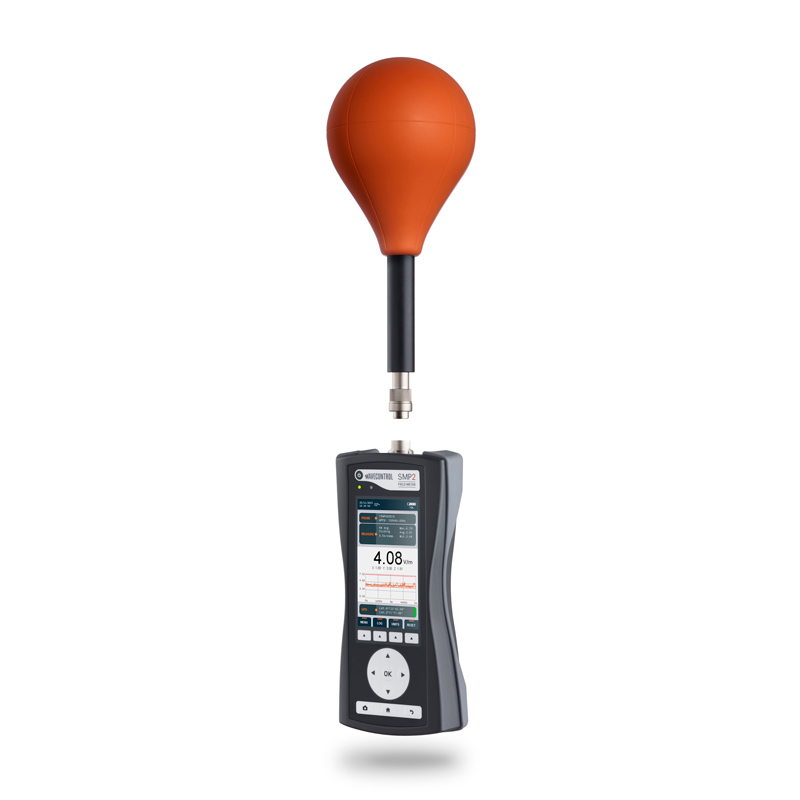SMP2 - Electronic Field Meter
The SMP2 is an ideal EMF measurement system for analysing magnetic and electric fields in public spaces and workplaces. The variety of probes which can be used with the SMP2 make this system unique as it performs, in a simple and precise way, measurements covering both the low and high frequency ranges.
Mobile telephony, radio and television transmission are now commonplace around the world. These technologies rely upon an extensive network of fixed antennas, or base stations, transmitting information with radio frequency (RF) signals. Millions of base stations exist worldwide and the number is increasing significantly with the introduction of new generation wireless technologies.
The SMP2 is an ideal instrument to measure and survey the population exposure to these high frequency electromagnetic emissions in public and private environments. The supply (generation and distribution) of electricity is one of the leading sources of low frequency electromagnetic fields. They are present, to differing degrees, practically everywhere in our surroundings: at work, at home, in schools, in hospitals, and so on, and even outdoors in places near high and medium voltage power grids and other services, such as railways.
Some examples of low frequency EMFs include power plants, transformers, power lines, electric motors, power machinery and equipment, railway power lines, and so on. Taking measurements with the SMP2 is the easiest, fastest and best way to check field levels and compare the results with legal limits or standards.
Specifications
| Versions | Broadband, Selective and Dual |
| Field probes | Automatic detection and recognition |
| Broadband | DC to 60 GHz (depending on field probe) |
| Spectrum analysis | DC to 400 kHz (FFT) |
| Weighted Peak Method | 1 Hz – 400 kHz (Real time WPM for direct comparison with limits) |
| Readout values |
|
| E Field units | V/m, kV/m, μW/cm2 , mW/cm2 , W/m2 , % |
| H Field units | nT, μT, mT, T, A/m, %, mG |
| Log time | Configurable (from 0.5 s to 6 min) |
| Average modes | Sliding window, arithmetic and normative averaging according to international standards |
| Average intervals | 10 s, 15 s, 30 s, 1 min, 2 min, 5 min, 6 min, 10 min, 15 min, 30 min |
| Schedule measurement | customized (up to 24 hours) |
| Memory capacity | More than 1 million samples |
| Data downloading | Mini-USB and Fibre Optics |
| Firmware updating | Mini-USB |
| Alarm | 2400 Hz audible signal (adjustable threshold) |
| Display type | Color transmissive TFT (480 x 272 pixels) |
| GPS (optional) | Built-in u-blox 7 (56 independent tracking channels) |
| Battery | Internal rechargeable Li-ion |
| Autonomy |
|
| Temperature range | -10 ºC to +50 ºC |
| Size | 100 x 215 x 40 mm |
| Weight | 575 g |
Product specifications and descriptions in this document subject to change without notice
Applications
- Railway
- Electromedicine
- Telecommunications
- Detection of Articles/Persons (RFID/EAS)
- Laboratories / R&D
- Defence
- Energy
- Industry
